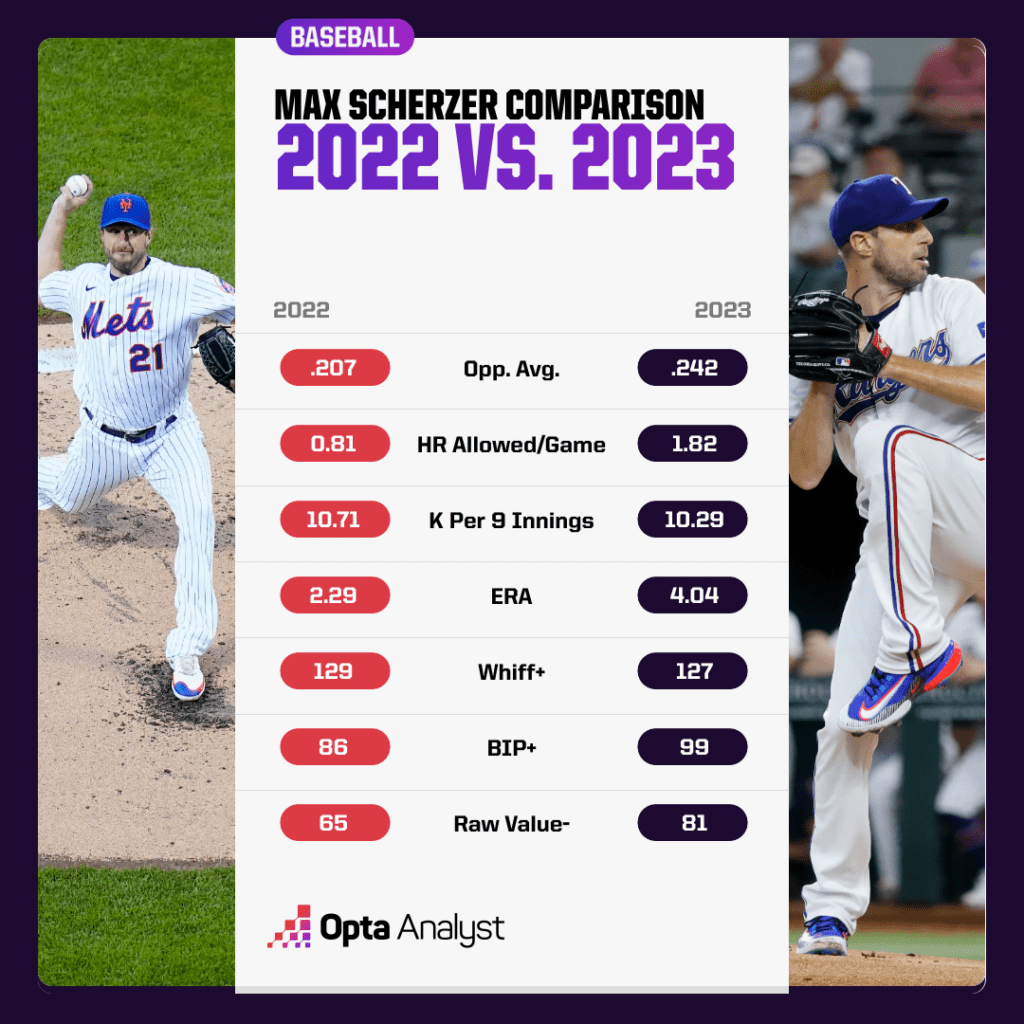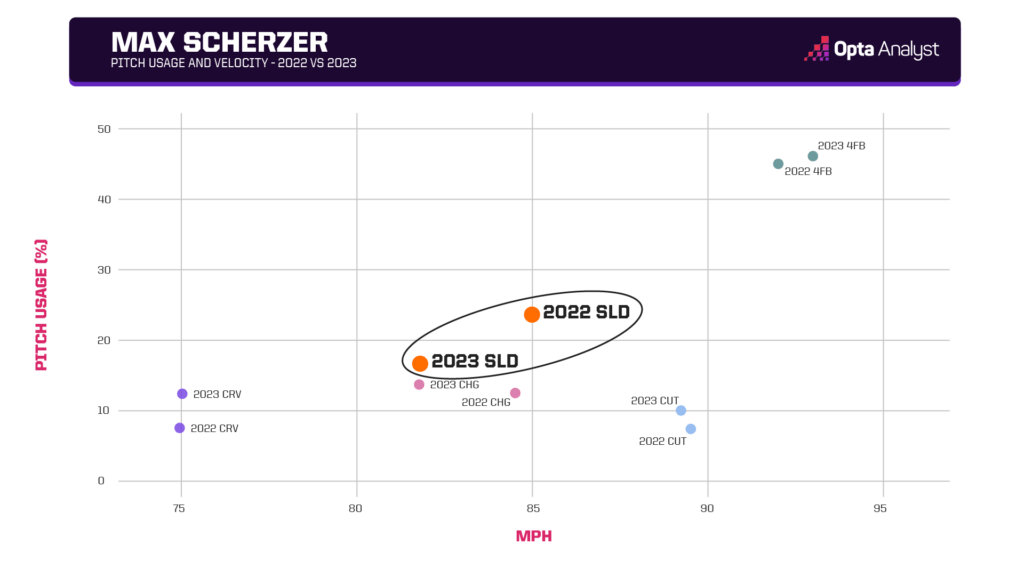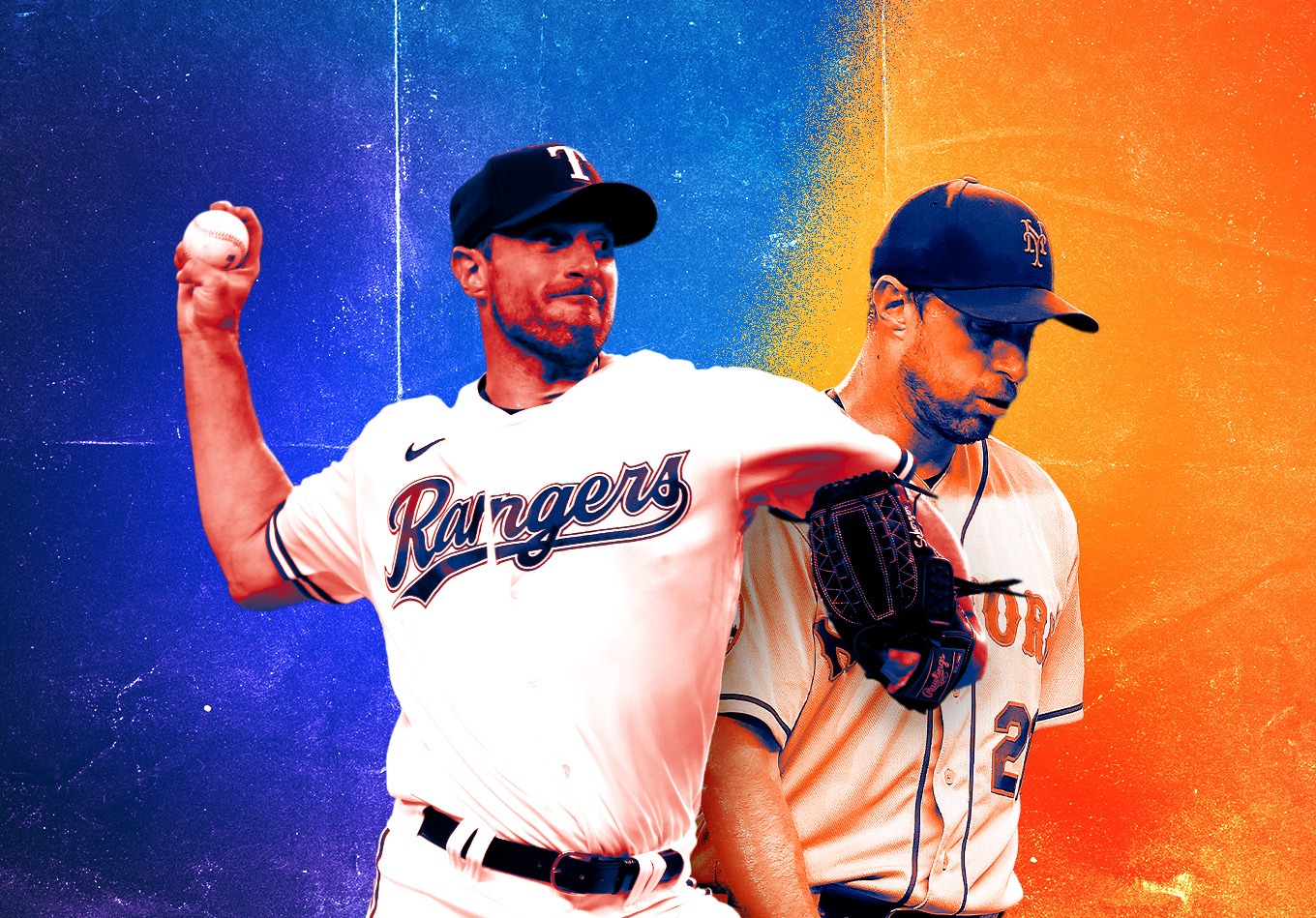The Texas Rangers are going for it, mortgaging their future to give themselves a better chance to win in the short term.
As part of that effort, they traded highly regarded prospect Luisangel Acuna to the New York Mets in exchange for eight-time All-Star Max Scherzer.
The right-hander had an excellent first year of his stint with the Mets in 2022 with a 2.29 ERA in 145.1 innings. But he’s sporting a 4.04 ERA in a 2023 season that has been marked by unexpected obstacles – namely injuries and a suspension for using foreign substances on the ball.
That ERA doesn’t seem that bad on the surface. It isn’t. However, it would be Scherzer’s highest mark since 2011. For a three-time Cy Young award winner who boasts a 3.15 career ERA, this year’s performance is rather disappointing.
So it’s fair to wonder if the Rangers are really acquiring a bonafide ace? Or is this version of Scherzer one that is already in sharp decline?
For starters, let’s just say that pitching at the highest level at age 39 is something that only special competitors do. Scherzer clearly qualifies. There might not be a player in the majors with a more impressive combination of skills, competitiveness and drive to win.
However, time passes for everyone. But whether Scherzer’s days as a star are officially over might depend largely on the effectiveness of one pitch.
While his ERA and FIP (4.53) are both below the standards of a real frontline starter this year, it’s fair to say, his 81 raw value- says he has been excellent – well above the league average.
Raw value (RV) examines performance on a per-pitch basis, rather than just looking at the outcome of the at-bat. It assigns a positive or negative value depending on what happens after each offering, judging elements such as command, ability to make hitters miss, exit velocity, launch angle, and others.
RV- is a rate stat, with 100 being the league-average value. For pitchers, anything below 100 means above-average performance.
Scherzer, despite his seemingly mediocre FIP, ranks ninth in the majors among qualified pitchers with his 81 RV-. Granted, it’s not the 65 RV- he posted last year (which would have ranked third if he qualified), but it’s a very good outcome.

Now, what has been the issue for the accomplished right-hander this season? The obvious answer is home runs.
Scherzer has surrendered 23 home runs already in 2023 in 113.2 innings. For reference, he allowed only 13 last year in 145.1.
Scherzer has allowed 1.82 home runs per nine innings, the fourth most in the league. He has conceded 15 long balls in his last 10 games, although we saw some progress on that front in his last outing. After surrendering three first-inning runs in his Rangers debut, he dominated the rest of the way and completed six innings with no more additional runs (and no homers in the outing as a whole).
The problems appear to be related to the effectiveness of his slider. The pitch has lost some of its ability to miss bats, measured thanks to whiff+. Last year, it recorded a 166 mark. This year? It’s at 121.
However, as previously suggested, the most tangible change appears to be that batters are inflicting much more damage against Scherzer’s slider than last year. In 2022, it had a 32 BIP+, which is a metric that measures, using 100 as the league average value, how good hitters are at doing damage after contact. For BIP+, higher is better, so the multiple Cy Young winner held the opposition in check with an elite slider BIP+.
Things have changed this year, though: he has allowed a 151 BIP+ on his trademark slider, well below average for its standards. Obviously, this recipe of not missing enough bats and seeing his slider punished with astounding frequency has resulted in a 111 RV-, below average for a hurler. In 2022, his slider yielded an elite 4 (!) RV-. The step back has been tremendous.
Scherzer’s pitch mix has changed a bit this year, as he is throwing fewer sliders (17.7% compared to 23.6% last year) and more curveballs (11.9 this year, 9.2% in 2022). He is also throwing a bit more fastballs, changeups and cutters than last season to make up for the missing sliders.

While his average fastball has decreased in velocity only slightly (from 94 to 93.6 mph) this year, his slider has gone from reaching home plate at 85.0 mph last year to 83.8 mph in 2023. The pitch has suffered a more tangible drop and that might help explain why hitters are more prepared for it.
More curveballs and fewer sliders might mean one of three things:
- A) something is bothering him physically
- B) he is trying to stay as healthy as possible (the pitch has a lot of strain on the arm)
- C) he knows the pitch has lost effectiveness and is shying away from it
Since he struck out nine hitters and logged a quality start in his first start with the Rangers, we are inclined to give him the benefit of the doubt, especially since he logged a homerless outing.
All things considered, the difference between being an ace or a solid mid-rotation arm might be getting his slider back on track. The Rangers are banking on a return to form as long as he is healthy, but decline, at this point in his career, is a real possibility.
Like this? Follow us on Twitter for more.
